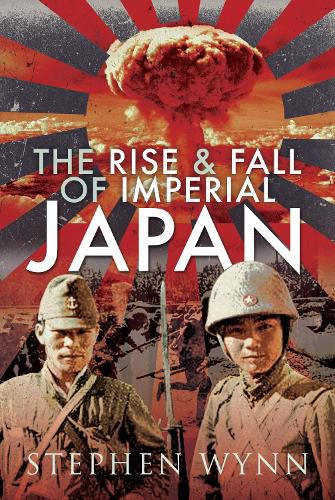Readings Newsletter
Become a Readings Member to make your shopping experience even easier.
Sign in or sign up for free!
You’re not far away from qualifying for FREE standard shipping within Australia
You’ve qualified for FREE standard shipping within Australia
The cart is loading…






The question is, how did a once great nation that built an empire lose it all? From the Meiji Restoration in 1868, restoring Imperial rule under Emperor Meiji, until Japan’s surrender at the end of the Second World War in 1945, the dream lasted a comparatively short period of time: seventy-seven years from beginning to end. Under Emperor Meiji’s rule, Imperial Japan began a period of rapid industrialisation and militarisation, leading to its emergence as a world power and the establishment of a colonial empire. Economic and political turmoil in the early 1920s led Japan down the path of militarism, culminating in her conquest of large parts of the Asian and Pacific region. The beginning of this path can be traced back to the Paris Peace Conference in 1919, when Japan’s proposal for racial equality was supported and approved by the other members, but overruled by the American President, Woodrow Wilson. Was this rebuttal by the West, and in particular the United States, the moment that changed the course of history? During the empire’s existence, Japan was involved in some sixteen conflicts, resulting in the occupation of numerous countries and islands throughout Asia and the Pacific regions. Thousands were under the emperor’s control, not all of whom were treated as they should have been. The book culminates with the atomic bombs dropped on Hiroshima and Nagasaki, which finally brought about Japan’s surrender and the end of the war in Asia and the Pacific. AUTHOR: Stephen is a retired police officer having served with Essex Police as a constable for thirty years between 1983 and 2013. He is married to Tanya and has two sons, Luke and Ross, and a daughter, Aimee. His sons served five tours of Afghanistan between 2008 and 2013 and both were injured. This led to the publication of his first book, Two Sons in a Warzone - Afghanistan: The True Story of a Father’s Conflict, published in October 2010. Both Stephen’s grandfathers served in and survived the First World War, one with the Royal Irish Rifles, the other in the Mercantile Marine, whilst his father was a member of the Royal Army Ordnance Corps during the Second World War. When not writing Stephen can be found walking his three German Shepherd dogs with his wife Tanya, at some unearthly time of the morning, when most normal people are still fast asleep.
b/w illustrations
$9.00 standard shipping within Australia
FREE standard shipping within Australia for orders over $100.00
Express & International shipping calculated at checkout
The question is, how did a once great nation that built an empire lose it all? From the Meiji Restoration in 1868, restoring Imperial rule under Emperor Meiji, until Japan’s surrender at the end of the Second World War in 1945, the dream lasted a comparatively short period of time: seventy-seven years from beginning to end. Under Emperor Meiji’s rule, Imperial Japan began a period of rapid industrialisation and militarisation, leading to its emergence as a world power and the establishment of a colonial empire. Economic and political turmoil in the early 1920s led Japan down the path of militarism, culminating in her conquest of large parts of the Asian and Pacific region. The beginning of this path can be traced back to the Paris Peace Conference in 1919, when Japan’s proposal for racial equality was supported and approved by the other members, but overruled by the American President, Woodrow Wilson. Was this rebuttal by the West, and in particular the United States, the moment that changed the course of history? During the empire’s existence, Japan was involved in some sixteen conflicts, resulting in the occupation of numerous countries and islands throughout Asia and the Pacific regions. Thousands were under the emperor’s control, not all of whom were treated as they should have been. The book culminates with the atomic bombs dropped on Hiroshima and Nagasaki, which finally brought about Japan’s surrender and the end of the war in Asia and the Pacific. AUTHOR: Stephen is a retired police officer having served with Essex Police as a constable for thirty years between 1983 and 2013. He is married to Tanya and has two sons, Luke and Ross, and a daughter, Aimee. His sons served five tours of Afghanistan between 2008 and 2013 and both were injured. This led to the publication of his first book, Two Sons in a Warzone - Afghanistan: The True Story of a Father’s Conflict, published in October 2010. Both Stephen’s grandfathers served in and survived the First World War, one with the Royal Irish Rifles, the other in the Mercantile Marine, whilst his father was a member of the Royal Army Ordnance Corps during the Second World War. When not writing Stephen can be found walking his three German Shepherd dogs with his wife Tanya, at some unearthly time of the morning, when most normal people are still fast asleep.
b/w illustrations